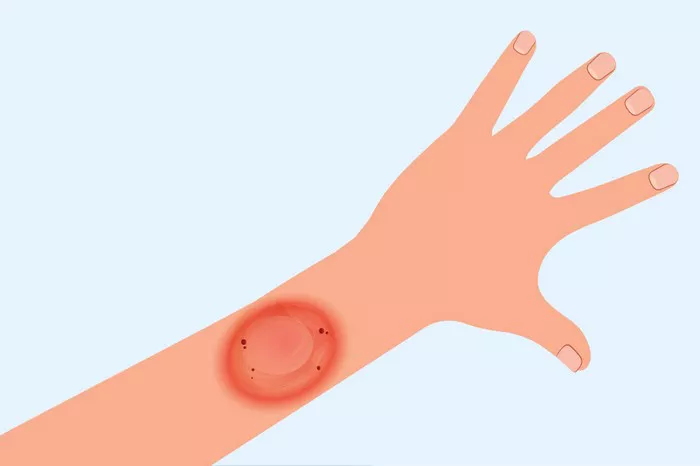Hidradenitis Suppurativa (HS) is a chronic inflammatory skin condition characterized by painful nodules, abscesses, and sinus tracts, typically occurring in areas with apocrine glands, such as the axillae, groin, and perianal region. The exact cause of HS remains elusive, but factors such as genetics, hormonal fluctuations, and immune dysfunction are believed to contribute to its development. Despite the availability of various treatment modalities, managing HS effectively can be challenging, prompting individuals and healthcare providers to explore alternative therapies. Among these alternatives, zinc supplementation has garnered attention for its potential role in managing HS symptoms. In this article, we delve into the scientific evidence surrounding zinc’s efficacy in alleviating the symptoms of Hidradenitis Suppurativa.
Understanding Hidradenitis Suppurativa: A Complex Dermatological Conundrum
Before delving into the potential benefits of zinc in managing HS, it is imperative to grasp the intricacies of this debilitating skin condition. HS manifests as painful, recurrent nodules and abscesses, often leading to the formation of sinus tracts and scarring. The lesions can significantly impact patients’ quality of life, causing discomfort, restricted mobility, and psychological distress. Despite its prevalence and the substantial burden it imposes on affected individuals, the pathogenesis of HS remains incompletely understood.
Current understanding suggests that HS arises from a combination of genetic predisposition, environmental factors, and immune dysregulation. Dysfunction in the hair follicle epithelium, coupled with aberrant immune responses and microbial colonization, contributes to the characteristic inflammation and tissue damage observed in HS lesions. Moreover, hormonal factors, obesity, and smoking have been implicated in the pathogenesis and exacerbation of HS, further complicating its management.
The Role of Zinc in Dermatological Health
Zinc, an essential trace element, plays a vital role in numerous physiological processes, including immune function, wound healing, and skin health. As a cofactor for various enzymes and transcription factors, zinc exerts antioxidant, anti-inflammatory, and antimicrobial effects, which are pertinent to the pathophysiology of HS. Notably, zinc deficiency has been associated with impaired immune responses, delayed wound healing, and increased susceptibility to infections, all of which are relevant to the management of HS.
In the context of dermatological health, zinc has been studied extensively for its potential therapeutic benefits in various skin conditions, including acne, eczema, and psoriasis. Its anti-inflammatory properties, coupled with its ability to regulate keratinocyte proliferation and differentiation, make zinc a promising candidate for adjunctive therapy in HS management. Moreover, zinc’s role in modulating immune responses and inhibiting microbial growth underscores its potential utility in mitigating the inflammatory cascade and preventing secondary infections in HS lesions.
Exploring the Evidence: Zinc Supplementation in Hidradenitis Suppurativa
While the precise mechanisms underlying HS pathogenesis remain elusive, emerging evidence suggests that zinc supplementation may offer therapeutic benefits in alleviating HS symptoms and reducing disease severity. Several studies have investigated the efficacy of zinc supplementation as either monotherapy or adjunctive therapy in the management of HS, yielding promising results.
A randomized controlled trial conducted by Danby et al. (2010) evaluated the efficacy of oral zinc gluconate supplementation in patients with HS. The study demonstrated a significant reduction in inflammatory lesion count and disease severity following zinc supplementation compared to placebo, highlighting the potential therapeutic efficacy of zinc in HS management. Subsequent studies have corroborated these findings, with improvements observed in lesion count, pain scores, and quality of life measures among individuals receiving zinc supplementation.
Furthermore, mechanistic studies have shed light on the underlying pathways through which zinc exerts its beneficial effects in HS. Zinc’s anti-inflammatory properties have been attributed to its ability to inhibit pro-inflammatory cytokine production, such as tumor necrosis factor-alpha (TNF-α) and interleukin-1 beta (IL-1β), thereby attenuating the inflammatory response within HS lesions. Additionally, zinc’s antimicrobial activity may help mitigate bacterial colonization within the follicular epithelium, reducing the risk of secondary infection and disease exacerbation in HS.
Considerations and Future Directions
While the evidence supporting the efficacy of zinc supplementation in HS management is promising, several considerations warrant attention. Firstly, the optimal dosage and duration of zinc supplementation remain unclear, with variability observed across studies. Further research is needed to establish standardized protocols for zinc supplementation in HS and elucidate its long-term safety profile.
Moreover, the potential interactions between zinc supplementation and existing HS therapies, such as antibiotics and biologic agents, require careful consideration. Clinicians should exercise caution when incorporating zinc supplementation into the treatment regimen of HS patients, particularly in those receiving concurrent immunomodulatory therapies.
In conclusion, zinc supplementation holds promise as a potential therapeutic adjunct in the management of Hidradenitis Suppurativa. Its anti-inflammatory, immunomodulatory, and antimicrobial properties make it a compelling candidate for alleviating HS symptoms and improving patient outcomes. However, further research is needed to elucidate the optimal dosing regimens, mechanisms of action, and long-term safety of zinc supplementation in HS management. By harnessing the therapeutic potential of zinc, clinicians may offer a novel approach to addressing the complex challenges posed by Hidradenitis Suppurativa and improving the quality of life for affected individuals.

























